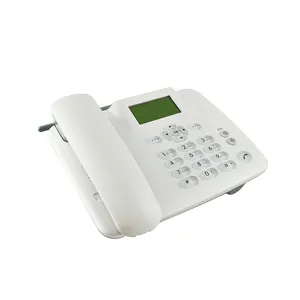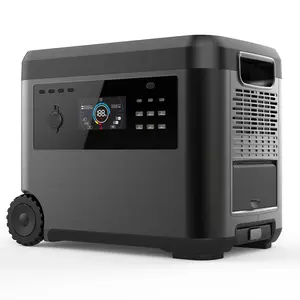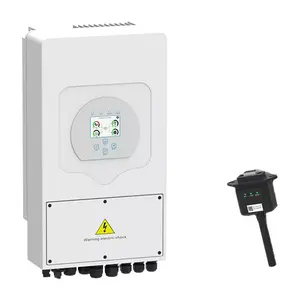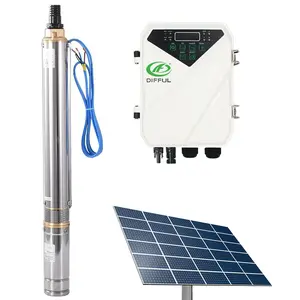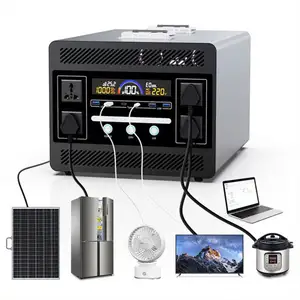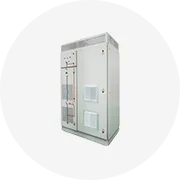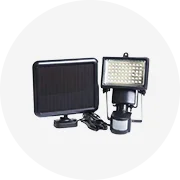Beliebt in Ihrer Branche






tragbarer multifunktions-superkondensator V2200Plus batterie-sprungstarter multifunktions-powerbank booster powerbank für fahrzeug
55,62 € - 63,04 €
Mindestbestellmenge: 50 Stück
Versand pro Stück: 10,46 €






Fabrik Großhandel Autobatterie Starthilfe Autos tart und Batterie Booster Auto Starthilfe
3,25 € - 18,08 €
Mindestbestellmenge: 1 Satz
Versand pro Stück: 19,18 €







6250A leistungsstarker Notfall-Autostarter-Kit Autobatterieladegerät 28000mAh Schnellstarter-Springpack Boost Plus Sprungbox
47,27 € - 60,71 €
Mindestbestellmenge: 2 Einheiten
Versand pro Stück: 27,81 €







Tragbares Ladegerät Start gerät Notfall-Werkzeug batterie tragbarer 12V 24V Auto-Starthilfe mit LCD-Bildschirm
3,25 € - 18,08 €
Mindestbestellmenge: 1 Satz
Versand pro Stück: 19,18 €







Auto-Batteriebooster Powerbank Ladegerät Lithium-Akkupack 37000 mWh tragbar Auto Reifen-Luftpumpe Sprungstarter
21,79 € - 25,96 €
Mindestbestellmenge: 1 Beutel
Versand pro Stück: 59,42 €







Neuzugang tragbarer 37000 mWh Autobatterielader Starthilfebooster Pack Power Bank 12 V Lithiumbatterie Starthilfe
22,25 € - 25,77 €
Mindestbestellmenge: 1 Stück
Versand pro Stück: 20,40 €







Hohe rate Headway 38120HP LifePO4 batterie 3,2 V 8AH 25C entladung akku für auto starthilfe
Sofort lieferbar
10,39 € - 12,06 €
Mindestbestellmenge: 99 Stück
Versand pro Stück: 1,65 €






OEM Li Ion 606168/3000mah 3,7 V wiederauf ladbarer Lithium-Ionen-Akku Lipo-Akku 3,7 V für Starthilfe
0,7416 € - 2,32 €
Mindestbestellmenge: 100 Stück






Hohe entladung rate lipo 606080 12 V 40C 7500 mah lithium-ion batterie für auto starthilfe
35,23 € - 37,08 €
Mindestbestellmenge: 5 Stück






A+ Qualität Lithium-Polymer-Batterie 857080 4000 mah 60 C wiederaufladbare 3,7 V Lipo-Batteriezelle für Drohne/FPV/Starter
2,01 € - 2,68 €
Mindestbestellmenge: 100 Stück
Versand pro Stück: 1,71 €






3S 35C Entladung 1800mAh Auto Not start Polymer Lithium Batterie
Sofort lieferbar
11,50 € - 14,84 €
Mindestbestellmenge: 50 Stück
Versand pro Stück: 4,75 €






OEM 10C 20C 30C 35C 100C Batterie, 3,2 V Lifepo4 Polymer Batterie zelle, 4000mAh 5000mAh 16000mAh 20000mAh RC Lipo LFP Batterie
4,64 € - 27,81 €
Mindestbestellmenge: 2 Stück
Ähnliche Suchanfrage:
starthilfe power allklimmzüge barlithium-polymer-akku-starthilfeschumacher batterie starthilfeneue 12v lithium batterie starthilfe12v lithium-polymer-akku-starthilfegenialer batteries prung starter18000mah akku starter12000mah lithium-batterie-starthilfelipo jump starterakku-starthilfegünstige batterie-starthilfelithium-batterie-starthilfe12v 14000mah lipo jump starter12v 12000mah lipo jump starter






kundendefinierte 12 v 12,8 v 50 ah 100 ah 200 ah auto-auto-wiederaufladbare lfp lifepo04 lifepo4 tiefzyklus-batteriepacks lithium-ionen-batterien
74,15 € - 259,55 €
Mindestbestellmenge: 2 Stück
Versand pro Stück: 206,16 €






40c Entlade rate 12V Lipo 606080 2500mah Starthilfe Batterie
33,84 € - 35,23 €
Mindestbestellmenge: 10 Stück





Jump-Starter Powerbank 5000 mah 3,7 v 925085 Li-Ionen Li-Polymer-Batteriezellen 2000 mah-18000 mah Lipo Lithium-Ionen-Batteriezellen
1,19 € - 1,47 €
Mindestbestellmenge: 100 Stück






Vant UAV HV 6S FPV Hochspannungsbatterie für Drohne 22,8 V 9000 mAh 100 C XT60 lipo Batteriepacks für UAV FPV-Drohne
44,96 € - 212,28 €
Mindestbestellmenge: 10 Einheiten
Versand pro Stück: 12,70 €






Oem Dst302530 200Mah Starter 3,7 V Kleinste Lipo Batterie Für Buletooh Lautsprecher
4,64 €
Mindestbestellmenge: 5 Stück






Philippinen Großhandel Lithiumbatterie Li-Ionen-Lithium LiFePO4 lipo4 12 V Solarenergiesystem-Batterie 100 Ah 200 Ah 300 Ah
123,29 € - 128,85 €
Mindestbestellmenge: 2 Sätze






Neue 6200mAh 3.7V 6.2Ah 70C Ternäre Solarenergie speicher batterie mit hoher Entlade rate für Starthilfe-Wechsel richter auto
5,38 € - 6,03 €
Mindestbestellmenge: 20 Stück






Autobatterien Großhandel Spanien Lithium-Ionen-Autobatterie Starthilfe Leistungs starke 12V 14.6V 100ah 110ah Auto Lithium Autobatterie
277,17 € - 330,94 €
Mindestbestellmenge: 4 Stück



3 Stück 40900 Lithium 3,7 V 5,5 Ah 5500mAh 5ah Batterie Lipo Li-Ionen-Zellen 30C Hohe Rate 50C für DIY 12V Auto Starthilfe Elektro werkzeuge
Sofort lieferbar
38,01 €
Mindestbestellmenge: 3 Sätze
Versand pro Stück: 0,00 €






Hohe große Kapazität CP224642 3.V 920mAh Beutel Lipo Lithium Polymer Batterie zelle für Elektroauto
1,40 €
Mindestbestellmenge: 10000 Stück





Lipo-Batterie zelle mit hoher C-Rate 6080 40C 50C 60C 3,7 V 2500mAh 3500mAh 4000mAh Für Starthilfe Power Bank
Sofort lieferbar
2,67 € - 2,95 €
Mindestbestellmenge: 30 Stück
Versand pro Stück: 0,7787 €






Zeee 6S leichteste FPV Lipo-Batterie 22,2 V 25 C Drohnenbatterie 6000 mah für Landwirtschaft Multi-Rotor fpv-Drohnen/Riese F3A F3C
30,50 € - 36,62 €
Mindestbestellmenge: 10 Sätze
Versand pro Stück: 20,86 €






Hot Sale 12v 62ah 72ah 82ah 100ah Lipo batterie 12V Start batterie a123 lifepo4 Zelle Starthilfe Batterie
268,83 € - 324,45 €
Mindestbestellmenge: 2 Stück
Versand pro Stück: 30,09 €






Werks anpassung Smart BMS Outdoor Energie speicher Tragbare Batterie 2560wh 200ah Lifepo4 Batterien
419,93 € - 441,25 €
Mindestbestellmenge: 2 Einheiten






40C wiederauf ladbare 3S LiPo Batterie 2655109 4000mAh 11,1 V Lithium Polymer Batterien für Auto
11,87 € - 17,43 €
Mindestbestellmenge: 10 Stück






BMS 7S 25,9 V Li-Ionen-Lipo-Polymer-Lithium-Schutz platine 12A mit Kühlkörper 3,6 V 3,7 V Zelle für Starthilfe batterie
Sofort lieferbar
4,54 € - 5,67 €
Mindestbestellmenge: 1 Stück
Versand pro Stück: 9,67 €






40c Entlade rate 12V Lipo 606080 2500mah Starthilfe Batterie
33,84 € - 35,23 €
Mindestbestellmenge: 10 Stück






12 v18v wasserdichter wiederauf ladbarer kunden spezifischer 21700 gestapelter Lipo-Akku Lithiumtitanat 60-V-Akku
305,91 € - 313,32 €
Mindestbestellmenge: 1 Stück






Kostengünstige 4S LiPo-Batterie explosionssicher 10000 Mah 14,8 V 6 S 130 C LiPo 3S-Batterie für Smart Watch
0,788 € - 1,02 €
Mindestbestellmenge: 10 Sätze



Fabrik großhandel 3,7 V 6000mAh Lithium-Polymer-Batterie zelle für RC-Auto 43128
5,10 € - 5,67 €
Mindestbestellmenge: 30 Stück






Hochwertige 1800 MAH 386888 wiederaufladbare Lipo-Batterie 3,7 V 40 C für Sprungstarter/Drohne/FPV mit A+ Qualität
2,01 € - 2,68 €
Mindestbestellmenge: 100 Stück
Versand pro Stück: 1,71 €






Beutel zelle hoher Abfluss 3,7 V 9364145 1064145 6864145 Li-Po-Batterie 5000mAh 7000mAh 6000mAh Lipo batterie 8000mAh 60c 90c 50c
4,64 € - 9,27 €
Mindestbestellmenge: 10 Stück





GEB 6543125 12V 40C 7500mah Lipo Batterie für auto starthilfe power bank
37,08 € - 74,16 €
Mindestbestellmenge: 10 Stück






Individuelle 12 V 12,8 V 12,8 Volt 50 Ah 100 Ah 200 Ah zylindrische Zelle Auto Auto-Lithium-Lifetrucklifepo4 wiederaufladbare Lifepo4 Batteriepacks
55,61 € - 166,85 €
Mindestbestellmenge: 4 Stück
Versand pro Stück: 150,20 €






Lithium-Polymer-Beutel zellen CP224642 nicht wiederauf ladbarer 3V 920 mAh Lipo-Akku
1,40 €
Mindestbestellmenge: 10000 Stück






ZEEE FPV Drohnenbatterie HV mit hoher C-Klasse 6S 22,8 V 9000 mah 100 C lipo-Batterie für FPV Luftbildfotografie landwirtschaftliche Drohne
47,28 € - 57,01 €
Mindestbestellmenge: 5 Sätze
Versand pro Stück: 32,45 €






hot sale 12 v 62 ah 72 ah 82 ah 100 ah lipo fahrzeugbatterie 12 v startbatterie a123 lifepo4 zelle sprung-auto start batterienpack
268,83 € - 324,45 €
Mindestbestellmenge: 2 Stück
Versand pro Stück: 30,09 €






BMS 4S 14,8 V Li-Ionen-Lipo-Polymer-Lithium-Schutz platine 20A mit Kühlkörper 3,6 V 3,7 V Zelle für Starthilfe batterie
Sofort lieferbar
4,35 € - 5,67 €
Mindestbestellmenge: 1 Stück
Versand pro Stück: 9,67 €
Top-Kategorien
Über lipo batterie starter
Technologie verändert die Art und Weise, wie Menschen täglich leben. Somit zuverlässig. lipo batterie starter auf Alibaba.com bietet jedem Gerät, das eine bessere Leistung benötigt, eine bessere Lebensdauer. Verschiedene Modelle haben unterschiedliche Spezifikationen, um den Empfehlungen des Lieferanten zu entsprechen. Dauerhaft. lipo batterie starter sollte schnell zu finden und leicht austauschbar sein. Mit einer breiten Palette von Fertigungsmaterialien gibt es eine bessere Auswahl beim Kauf für den Gebrauch.
Aufgrund des technologischen Fortschritts benötigen zahlreiche Geräte eine konstante Stromversorgung. Zuverlässig. lipo batterie starter sollte die Host-Appliances für einen besseren Service überleben. Ebenso sind diese Hilfsprodukte mit Lithium- und Blei-Säure-Komponenten kompatibel. Daher ist die Kompatibilität zwischen den Geräten und den unterstützenden Geräten von großer Bedeutung.
Ob es sich um ein stationäres Haushaltsgerät oder eine tragbare Reise-Powerbank handelt, wiederaufladbar. lipo batterie starter Teile auf Alibaba.com stellen sicher, dass Benutzer einen optimalen Service erhalten. Diese Produkte können extremer Hitze und Korrosion standhalten. Die lange Lebensdauer bietet einen besseren Service, bevor sie ersetzt werden müssen. Auch hier sollten die Lagereinrichtungen intakt sein, um harte Stöße und Schäden zu reduzieren. Sie werden auch mit Verbindungskabeln für einen besseren Service geliefert.
Für große Strombedürfnisse wie Dreiräder und Musikinstrumente ist das digitale. lipo batterie starter geben ein finanzielles Polster. Alibaba.com bietet eine Plattform für Zuverlässigkeit beim Kauf. Die breite Palette globaler Verkäufer liefert die Produkte innerhalb eines angemessenen Zeitrahmens für den Kundenkomfort. Blättern Sie durch die Kataloge, um die am besten kompatiblen Geräte und Finanzgeschäfte zu finden.
Aufgrund des technologischen Fortschritts benötigen zahlreiche Geräte eine konstante Stromversorgung. Zuverlässig. lipo batterie starter sollte die Host-Appliances für einen besseren Service überleben. Ebenso sind diese Hilfsprodukte mit Lithium- und Blei-Säure-Komponenten kompatibel. Daher ist die Kompatibilität zwischen den Geräten und den unterstützenden Geräten von großer Bedeutung.
Ob es sich um ein stationäres Haushaltsgerät oder eine tragbare Reise-Powerbank handelt, wiederaufladbar. lipo batterie starter Teile auf Alibaba.com stellen sicher, dass Benutzer einen optimalen Service erhalten. Diese Produkte können extremer Hitze und Korrosion standhalten. Die lange Lebensdauer bietet einen besseren Service, bevor sie ersetzt werden müssen. Auch hier sollten die Lagereinrichtungen intakt sein, um harte Stöße und Schäden zu reduzieren. Sie werden auch mit Verbindungskabeln für einen besseren Service geliefert.
Für große Strombedürfnisse wie Dreiräder und Musikinstrumente ist das digitale. lipo batterie starter geben ein finanzielles Polster. Alibaba.com bietet eine Plattform für Zuverlässigkeit beim Kauf. Die breite Palette globaler Verkäufer liefert die Produkte innerhalb eines angemessenen Zeitrahmens für den Kundenkomfort. Blättern Sie durch die Kataloge, um die am besten kompatiblen Geräte und Finanzgeschäfte zu finden.
